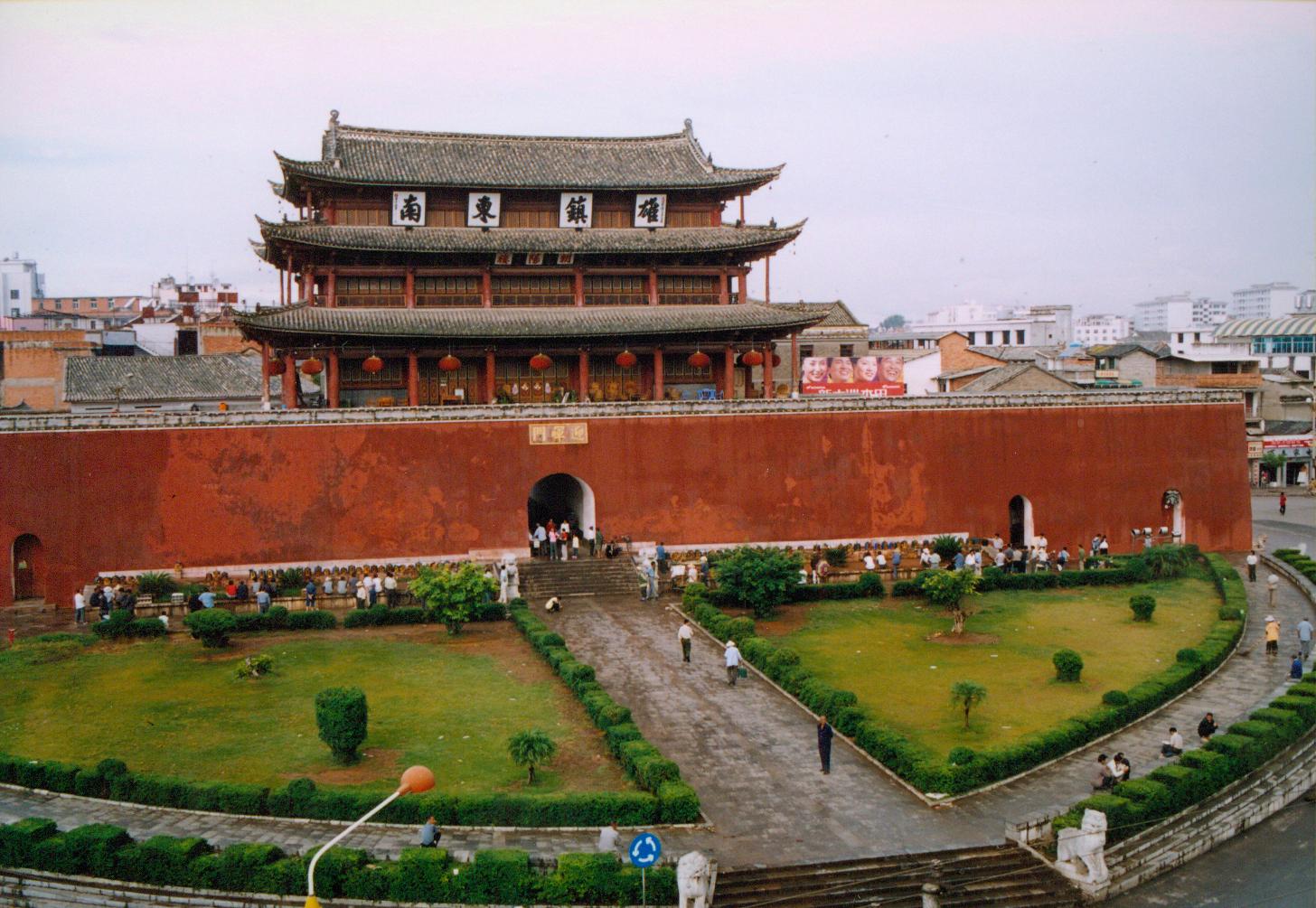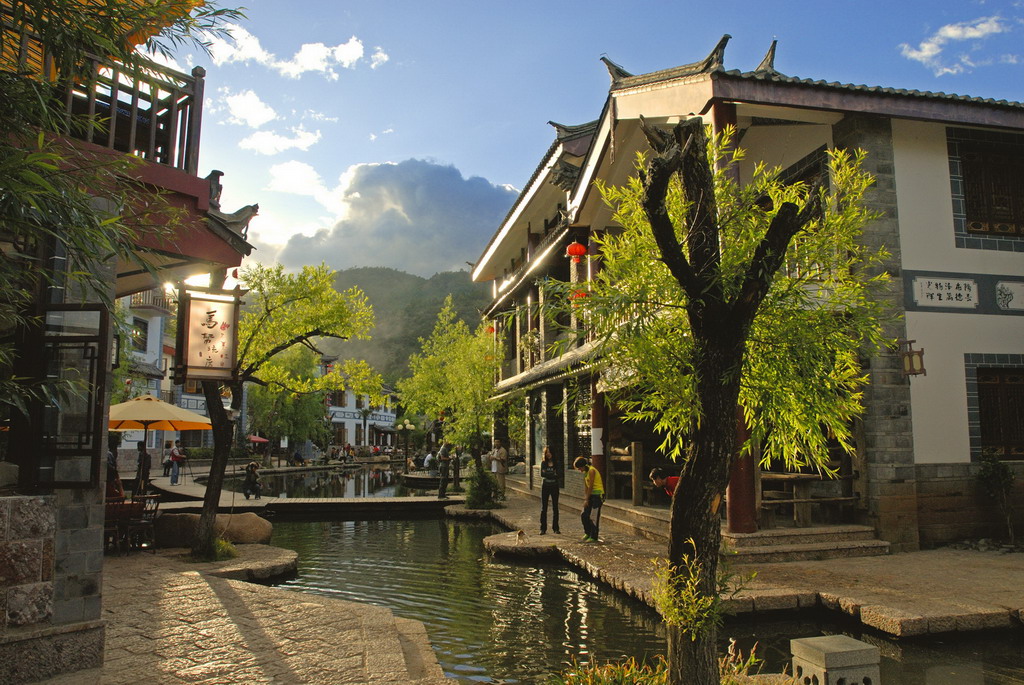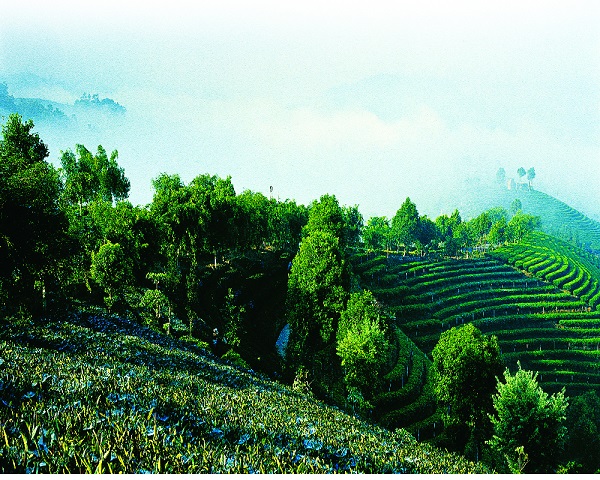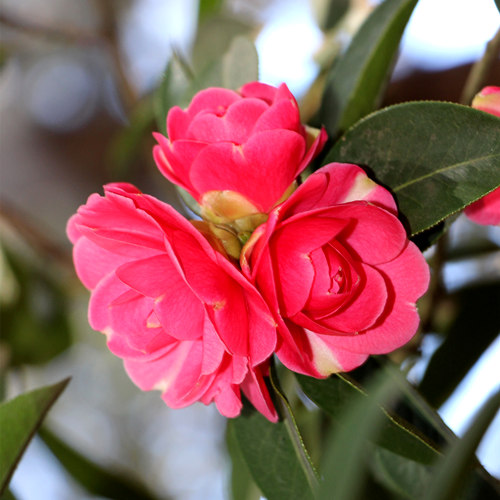
Old Towns in Yunnan
Guandu Old Town
Guandu Old Town is one of the historic and cultural towns in Kunming area. It is situated in the southeast suburb of Kunming. Major sights of Guandu Old Town can be briefed as"six temples, seven pavilions and eight shrines", among which the earliest are TuzhuTemple and Fading Temple.
The center of Guandu Old Town is the Vajra Pagoda, which is reputed to have been built more than five centuries, in 1457. Over the years, the pagoda sank into the soft ground ,until it was raised 2.6 meters in 2001. Today the perpendicular tunnels within the pagoda are popular places to escape the midday sun.

Jianshui
Jianshui, an ancient town in Honghe Prefecture of Yunnan Province, is one of the national famous historic and cultural towns of China. Jianshui was called Lin'an or Badian Town in ancient times.
Jianshui still retains the traditional style of the original town in the Ming Dynasty (1368-1644) with break walls and a gate tower. With a history of about 1200 years and an abundant distinctive cultural heritage, the Ancient Town enjoys a great reputation as a "museum of ancient buildings and residential houses" and attracts a lot of visitors at home and abroad.
Weishan Old Town
The Weishan old town possesses numerous cultural relics and scenic beauties. According to historical records, Weishan had become the political, economic and cultural center of west Yunnan Province as early as the Tang Dynasty. It is not only the birthplace of Nan-chao Kingdom, but an important hub of the ancient Tea Horse Road. Weishan actually was the biggest market town for trading in those day in this area.
Weishan Old Town is not only a state-level historical and cultural town, but also one of the "four famous cultural towns" (Wen Xian Ming Bang) in Yunnan Province.
Around the ancient city of Weishan, there built solid walls, with four gates on each direct (including the East Gate, the West Gate, the South Gate and the North Gate). In the center of the city, there is a Xing Gong Tower (meaning a tower surrounded by stars). The shape of the ancient city is like a square seal. Inside the city, all the roads are arranged according to the chessboard type, with 24 streets and 18 lanes crossing each other.
Major scenic spots there include: Gongchen Pavilion, Weibao Mountain, Yuanjue Temple, and Longyutu Mountain etc.
Weishan County was once given the name of "the land of Chinese Bandhnu Art" by the Ministry of Culture. The bandhnu clothes produced in Weishan County is exported to Janpan, the US, the European counties, the Southeast Asia countries and many other countries.
Travelers can always find special agricultural products such as tobacco, tea, walnuts, beef, black goat, white kidney beans, beer barley, fruits, herbs and so on, and local products such as tie-dyed clothes, ethnic snacks, preserved pickles, preserved fruits and so on.

Shuhe Ancient Town
Shuhe or "Shaowu" in the Naxi language means the village at the foot of the high hill. It is also called Dragon Spring Village after a spring that rises nearby.
Nestled at the foot of Jade Dragon Snow Mountain, 6 km northwest of Lijiang old town, Shuhe was once a staging post at ancient Tea & Horse Road. In history, with the rise of Tea& Horse Road, Shuhe town was a major producer of leatherworking in the region. Shuhe town is just like a small-sized Lijiang with a similar layout, which boasts a Square Street(Sifangjie) and rivers flowing at downtown.
UNESCO (United Nations Educational, Scientific and Cultural Organization) has listed it as an important component of Lijiang as it is a well-preserved example of a town along the ancient tea route and one of the earliest settlements of the ancestors of Naxi people. It is called "the hometown of springs".

Heshun Ancient Town of Tengchong
Its initial name was Wentunyan, which indicated enough sunshine and comfortable climate. Now, the name in Chinese means peace and harmony. Such name derived from a verse, which reads "the rising clouds herald auspicious future and the gentle breeze brings peace and harmony". The name shows local people's wishes for a happy life. The river running through the town named Sanhe River and there is an archway inscribed "和顺顺和", which means Heshun enjoys harmony and peace.
Heshun Old Town is surrounded by a river and built along the slope of a hill. The town extends about 3km horizontally. Since the early of Ming dynasty, ethic Han Chinese from inland migrated to this place for military presence. Later, the town got prosperous from international trade business as it was the must-go-through site on the old Silk Road. To the east of the town lies the Hengduan mountain range, which rolls on for hundreds of kilometers, and to the west is Myanmar. Many dormant volcanoes dotted around



